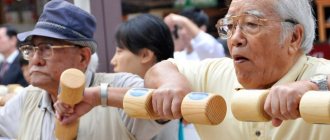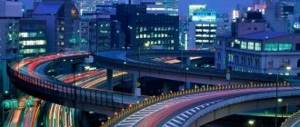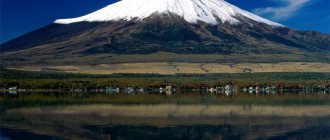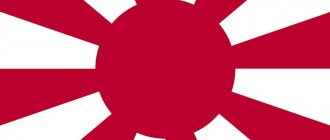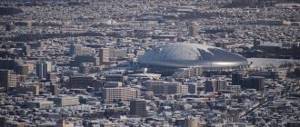Japan is located in the Pacific Ocean, or more precisely, on the Japanese archipelago, which consists of 6852 islands. This is an economically developed state with a high standard of living and unique culture. Although the economic and social sphere is at its best, Japan's population is not experiencing the best period in terms of growth.
However, this figure is decreasing every year: in 2021 alone it became less by 149,000 people. Forecasts for 2019 are also not reassuring: the countrymeters portal reports that natural growth will remain negative, the loss will be another 149,000. We need to figure out why such a developed state is experiencing difficulties with population growth.
Number
In terms of population, the Land of the Rising Sun is one of the ten most populous countries. The total number of inhabitants is almost 130 million people. This is a large indicator, especially compared to the Russian Federation, whose area is several times larger and whose population is almost the same.
At the moment, Japan has a slightly smaller population than Mexico (125.9 million versus 126.5 million), while Ethiopia is striving to get into the top ten with 112 million inhabitants. The population has grown gradually and at the moment the dynamics are not the most active. To solve problems related to accommodation, a policy is actively being pursued to distribute land located on the islands that are part of Japan.
Dynamics by year
The United Nations began publishing the first population data in 1950. At that time, Japan had 82,802,084 inhabitants. Every year their number increased, and at an active pace. Therefore, in 1967 the population exceeded 100 million, and in 2014 there were already more than 128 million inhabitants. Then negative dynamics began, the number of Japanese decreased, which is why at the moment the population is almost equal to Mexico.
Density
Population density directly indicates the dense population of the state. This figure is currently 340 people/km2. The number is quite large. It is worth remembering that almost two-thirds of the entire area is uninhabited, which is why this figure is actually even higher.
Due to the lack of land, high-rise buildings are predominantly used in megacities. Residential buildings are very tall, while the area of apartments is minimal. In almost any home there are folding wardrobes and beds, and almost all existing furniture can be hidden in the walls to free up as much space as possible.
Typically, young single Japanese choose such apartments; a large home is a real luxury for every resident. The cost of land and houses is very high, the main reason for this is the impressive population density. With a population of more than 120 million, the Japanese live on an area whose area is actually equal to the area of the Moscow region.
GDP per capita
The peak of economic development of the Land of the Rising Sun occurred between 1960 and 1980 of the 20th century. But the 90s are considered a lost decade in Japan. Due to the strong rise in prices, economic development has slowed down quite seriously. The government took a number of decisive measures, thanks to which by the mid-2000s the dynamics of development were better than in Western countries. At the moment, Japan is one of the ten countries with the largest gross domestic product.
The reason for its increase is the high volume of exports of goods produced in Japan. These include electrical products, automobiles, and a large number of electronics. For this reason, even during the global financial crisis of 2008, the size of GDP continued to grow. But over the past couple of years its value has fallen by more than 15%. The reason lies in changes in the dollar exchange rate, due to which consumer demand for cars from Japanese manufacturers has dropped quite seriously.
Currently, the gross domestic product per capita is $39,305. This value differs slightly from that of the United Arab Emirates ($40,711). Since last year the value has increased by 2.5%. The low growth is a consequence of the fact that Japanese industry has reached the peak of its development. Therefore, in the near future, the value of gross domestic product will grow slightly.
Geographical location of Japan
Geographically, the state consists entirely of islands located in the eastern part of Asia.
97% of the area is formed by the largest of them:
- Honshu;
- Hokkaido;
- Kyushu;
- Shikoku;
- Okinawa.
The remaining 3% is made up of groups of Pacific islands: Nampo, Izu, Ogasawara, Kazan and others.
History of development
With the rise to power of a military government in the 17th century, the Tokugawa Shogunate, Japan maintained a policy of closed borders that lasted two centuries. As a result, by the mid-19th century the country was a fragmented, closed agricultural periphery. By this time, it had become impossible to ignore global development trends and the penetration of Western republics into the region.
The deterioration of the internal economic and social situation led the country to a coup - the Meiji restoration (enlightened rule).
From this moment on, a new stage in the historical development of Japan begins, associated with the following factors:
- The abolition of the shogunate and the return of the power of the monarch.
- Opening borders: introducing Western technologies, developing foreign trade relations.
- Reorganization of the army and navy along the lines of Germany and Great Britain.
- Reforming the internal situation of the country.
This policy brought the country to the position of a developed world power by the beginning of the 20th century. The position of the aggressor in the Second World War and its consequences (destruction, indemnity, loss of territories, military power and independence) threw the country back from the general line of development for some time. This made its own adjustments to the history of the country.
In the post-war period, all funds were spent on restoring the state, and not on the arms race and participation in military clashes of the Cold War. The result was record economic growth in the 50-70s of the 20th century. The Japanese economic miracle returned the country to a place among world leaders that remains to this day.
Area and boundaries
The area of the country is represented by the sum of all its constituent islands and water surfaces. This number is 377,930 sq. km.
Where Japan is located on the world map shows us the complete absence of land borders.
The closest neighbors are separated by seas and straits:
- China - East China Sea in the southwest;
- Korea - the Sea of Japan in the west;
- Russia (Sakhalin Island and the Kuril Islands) - the La Perouse Strait and the Kunashir Strait in the north.
Capital
The main city of the country is Tokyo, located on the largest and most populous island of Honshu. More than 13 million people live here.
Tokyo is the center of:
- production of high-tech science-intensive products;
- the location of the main offices of international foreign corporations;
- education;
- finance (one of the largest stock exchanges in the world is located);
- politics and administration.
Political regime
Japan is a democratic state with a constitutional monarchy form of government. This implies the nominal supremacy of the emperor, whose role is to perform representative functions.
The de facto head of state is the Prime Minister, head of the Cabinet of Ministers, the country's executive body.
The expression of the will of the people, the holder of legislative power and the bearer of state sovereignty is the parliament.
The composition is represented by two chambers:
- House of Representatives, consisting of 480 deputies elected for 4 years.
- The House of Councilors, consisting of 242 deputies elected for 6 years.
State symbols
The flag of Japan is a red circle on an azure background. It is a symbol of the country's rise in the 19th century. Along with the anthem and flag, the seal of the emperor is a state symbol. Her imprint is a chrysanthemum with 16 petals.
Japan also has many officially recognized symbols of the country associated with animals, plants and nature.
First of all this:
- Mount Fuji;
- sakura;
- Japanese stork;
- Tanuki (raccoon dog), etc.
The language of the country is absolutely special, having several dialects. It is considered one of the most difficult; it can take a whole year to learn just the alphabet and counting system. The hieroglyphic writing, which is unusual for the European eye, is especially difficult to perceive.
The country's official currency is the yen, which is one of the world's reserve currencies. Japanese money is represented by coins and paper bills. The smallest coin is one yen, the largest bill is 10,000 yen, or one mana.
Economy
Rapid economic growth 50-70. not without government intervention. But at present, such trends cannot solve the crisis, so it is proposed to weaken the regulation of foreign exchange and financial markets, privatize the public sector, etc.
Financially, Japan is a global creditor, plays a leading role in the world and has a dominant position in Asia. On economic issues, Japan maintains an active dialogue with the US President.
In terms of production, the resource-poor country occupies a leading position in industry.
The leading industries here are:
- robotics;
- electronics;
- machine-tool, machine-tool, shipbuilding.
Agriculture is represented by rice growing and fishing. The country is a leader in the production and processing of fish and seafood in the world.
Relief and climate
The volcanic and mountainous origin of the islands, the constant movement of the tectonic plate leads to frequent earthquakes in the region.
The climatic zone is represented by four distinct seasons.
Depending on the territory, temperature fluctuations occur on average:
- From –15 °C in the north of Hokkaido, to +16 °C on the southern islands in winter.
- From 25 °C in the north, to 30 °C in the south - in summer.
The weather in Japan is influenced by its island position, proximity to the ocean, high humidity and seasonal winds.
Gender and age
The gender composition is even (the number of men is equal to the number of women). This indicator is not typical for most countries. The slight difference appears due to the fairly frequent birth of boys. At the same time, life expectancy is longer, on the contrary, among women.
The gender composition of the working population is also homogeneous. The development of the Land of the Rising Sun is evidenced by the good heredity of its citizens and the high level of medicine. Thanks to this, the average life expectancy is almost 80 years. Currently, Japan is home to more than 70,000 residents whose age has exceeded 100 years. Moreover, 62,000 of them are women, and about 7,500 are men. From these data it is clear that the difference between representatives of different sexes is visible at a fairly old age.
Famous Japanese
Undoubtedly, the most popular and famous personalities in Japan are members of the imperial house. First of all, this is Emperor Akihito himself, who over the years of his reign has achieved an exceptionally positive attitude towards himself from the press and people. In particular, he brought a lot of new things into the way of life of his family.
Already in 2021, Akihito’s son, Naruhito, will assume the post of emperor. The prince is married to diplomat Masaka Owada, and the family has a daughter, Aiko. Naruhito names the country's main problems as the aging population (declining birth rate) and the consumption of water resources.
Figures of art, culture and media are no less popular in Japan.
Here are some of them:
- Hayao Miyazaki. Born January 5, 1941. A world-famous creator of animated films, who brought anime into a special, original genre.
- Isao Takahata. Born October 29, 1935. Animator, friend and colleague of Hayao Miyazaki, who made a significant contribution to the development of anime.
- Miya Shinma. Born in 1970. Perfumer, creator of his own brand, known all over the world.
- Hiroshi Yoshida. Years of life 1876-1950. Artist. During his creative career he made a significant contribution to the development of Japanese engraving and developed his own unique painting style.
- Eiko Kadono. Born January 1, 1935. A writer, her children's series brought her worldwide fame. Winner of many prizes and awards.
Urbanization
To accommodate a large number of residents in a small area, residential areas must contain predominantly tall buildings. It is also necessary to create all the necessary infrastructure and locate industrial and scientific centers nearby.
All this leads to the emergence of cities, of which there are about 790 in the land of the rising sun. A settlement acquires such status when the number of inhabitants exceeds 50,000 people. One of the following statuses can also be assigned:
- Special, with a population of over 200,000. 31 cities have this status.
- Central – more than 300,000, 54 cities.
- Determined by government orders, more than half a million people - 20 settlements.
The largest city in Japan is Tokyo, with a population of more than 13 million people.
Japan population by age group (in 2021):
| Age group | Men, persons | Men, % | Women, persons | Women, % | Number of age group, people. | Share of age group in total population, % |
| 0-14 | 8 084 204 | 51.35% | 7 660 291 | 48.65% | 15 744 495 | 12.45% |
| 15-24 | 6 002 367 | 51.30% | 5 697 155 | 48.70% | 11 699 522 | 9.25% |
| 25-54 | 24 305 855 | 50.92% | 23 431 695 | 49.08% | 47 737 550 | 37.74% |
| 55-64 | 7 698 011 | 50.06% | 7 681 015 | 49.94% | 15 379 026 | 12.16% |
| 65+ | 15 662 608 | 43.61% | 20 253 257 | 56.39% | 35 915 865 | 28.40% |
National composition
One of the traditions of the land of the rising sun is a small number of foreigners. According to official data, the majority of the population here is Korean and Chinese, with the share of the rest of the population not exceeding 2 percent.
There are very few representatives of other states living here on a permanent basis. A small number of highly qualified specialists come for a couple of years and then return to their homeland. There are also few indigenous inhabitants of the Japanese islands, relative to the Japanese themselves. At the same time, they preserve their culture and language.
China
China has a long, fascinating history rich in art and civilization.
China's economy developed during the imperial era, although the 19th and 20th centuries were marked by famine, unrest and foreign intervention. The Republic of China was established in 1912, but the country has long suffered from civil unrest and political instability. The Sino-Japanese War resulted in the deaths of millions of Chinese and the country lacked strong political leadership. After the end of World War II, Mao Zedong, the leader of the Communist Party, established an authoritarian, autocratic system and imposed strict and rigid controls on the lives of every citizen. After Mao's death, his successors focused on economic growth and began moving - albeit unofficially - towards capitalism. Today, political control over the population remains tense. Especially after the ruling Communist Party of China removed from the country's constitution a provision limiting the powers of the head of state to two 5-year terms. This means that China's current President Xi Jiping could be the nation's leader for life.
Religions
According to studies, most Japanese people profess Shintoism and Buddhism. However, many residents prefer syncretism. During life, a number of important stages of life are carried out according to Christian customs, and a number - according to Buddhist ones.
Shintoism is considered the state religion. This is a rather complex religion that is not very easy to explain. There is no list of beliefs or set of rules. The basic principle of religion is to believe and worship the spirits that exist in all living and nonliving things.
Buddhism appeared in Japan in transit, through China and Korea, around the sixth century, but it began to spread massively only in the ninth century AD. Thanks to the influence of this religion, Shintoism itself partially changed. Spirits (kami) came to be considered temporary incarnations of deities worshiped by followers of Buddhism. At the moment, many sanctuaries of different religions are located close to each other.
Interesting Facts
This is interesting:
- A popular tourist destination is Aokigahara, or the suicide forest. According to legend, weak relatives whom they could not feed were left here to die.
- A distinctive feature of the Japanese greeting is bowing instead of shaking hands. Moreover, there are a considerable number of rules on how low the bow should be or how many times you need to bow.
- To this day, you can order dinner with a geisha as an attraction. But you can’t relax here either. Even holidays in Japan are strictly regulated and surrounded by a set of rules, especially in relation to your escort.
- Perhaps it is precisely because of the huge number of restrictions and regulations that teenagers in Japan are extremely radical in their appearance. Strange clothes, multi-colored hair and provocative behavior are allowed until you get a job.
- The Japanese are very reserved and non-confrontational. Showing aggression here is considered a loss of dignity.
Migration
A number of developed countries in Europe and North America are quite successfully coping with the problems of aging residents thanks to smart changes in migration policy. In Japan, no changes are taking place, so the country has only one percent of migrants, which are Chinese and Koreans. Thanks to this, the state has a low crime rate, and also preserves ancient traditions and culture. Migrants from other countries simply cannot settle down here.
There are several reasons for the low number of migrants. One of them is the high population density and a large amount of vacant land that is unsuitable for life. Features of the mentality are also noted that make it difficult for migrants to settle into society. For this reason, a fairly homogeneous ethnic composition in the land of the rising sun will remain for a long time.
Family
Japan is one of the few eastern countries that, having opened its borders to Europeans in the mid-19th century, managed to preserve its traditions and customs, which are closely intertwined with modern trends. This also applies to the family situation.
Here, to this day, especially in wealthy circles, maya (bride) plays a big role. Thanks to them, about a third of marriages are concluded.
Traditionally, Japan is dominated by patriarchal families, where the leading role is played by the man. Although women here work and build careers, after the birth of a child they often remain at home until the children reach the age of five.
The Japanese have great respect for their elders. Traditionally, the Japanese family consisted of several generations. Elderly relatives lived with their children and grandchildren. Currently, due to the high employment of working family members, pensioners often remain in nursing homes, where they are provided with proper care.
Today, Japanese families have one or two children. The national average is 1.4 children per woman, resulting in negative population growth rates.
The role of a man
Despite all modern trends, the head of the family in Japan is a man. His interests come first. He also makes important decisions regarding family members.
This role comes with responsibilities. A man is the breadwinner and protector of the family. He is forced to work a lot, in modern Japan - often until the night, which limits communication with his family only on weekends.
The role of women
From this follows the role of a woman; here she is the keeper of the hearth. Many women give up their careers in favor of a family: running a household, organizing their daily life, raising children. At least until the child starts school, which happens at the age of five. Kindergartens are not popular here.
Fertility
The birth rate is at a catastrophically low level. Over the decade, numbers fell by more than 2.1 million people. In 2020, just over 1,040,000 children were born, but at the same time, 1,260,000 people died. Every year there is a negative trend - the population decreases by almost 200 thousand inhabitants.
There are many reasons for the negative dynamics. The main ones are the huge number of suicides (Japan ranks third in this indicator in the world), as well as the lack of desire among people to start a family and children. Instead, many Japanese prefer an essentially reclusive lifestyle, where socializing is replaced by watching movies and TV series, as well as video games, instead of going to public places, all the time is spent at home, and food is also ordered to the house.
In the land of the rising sun, there is an active fight against these causes of low birth rate. Every year, a large number of public service announcements are released describing the benefits of family life. But there is still a lot of work to be done, and we should not expect a change in dynamics in the near future.
How are the Japanese different?
The Japanese are characterized by workaholism, pedantry and scrupulousness in their work. Although the working day in the country is officially eight-hour, few people comply with this norm. Employees often stay at work for 12 hours.
A peculiarity of their appearance is the average height of the Japanese, which differs from the European one. At the beginning of the 20th century it was 150 cm for men and 145 cm for women. Today there is an increase in this figure - the average Japanese reaches 170 cm.
Lifespan
One of the key demographic indicators is life expectancy. This term refers to the number of years lived, provided that the values of fertility and mortality do not change.
Due to a fairly high standard of living and good development of the scientific and medical fields, this figure in Japan is 82.3 years for both sexes. This global average is only 71 years. There are also noticeable differences between the life expectancy of men and women. In the first case, the value is 79 years, in the second – 85.7 years.

